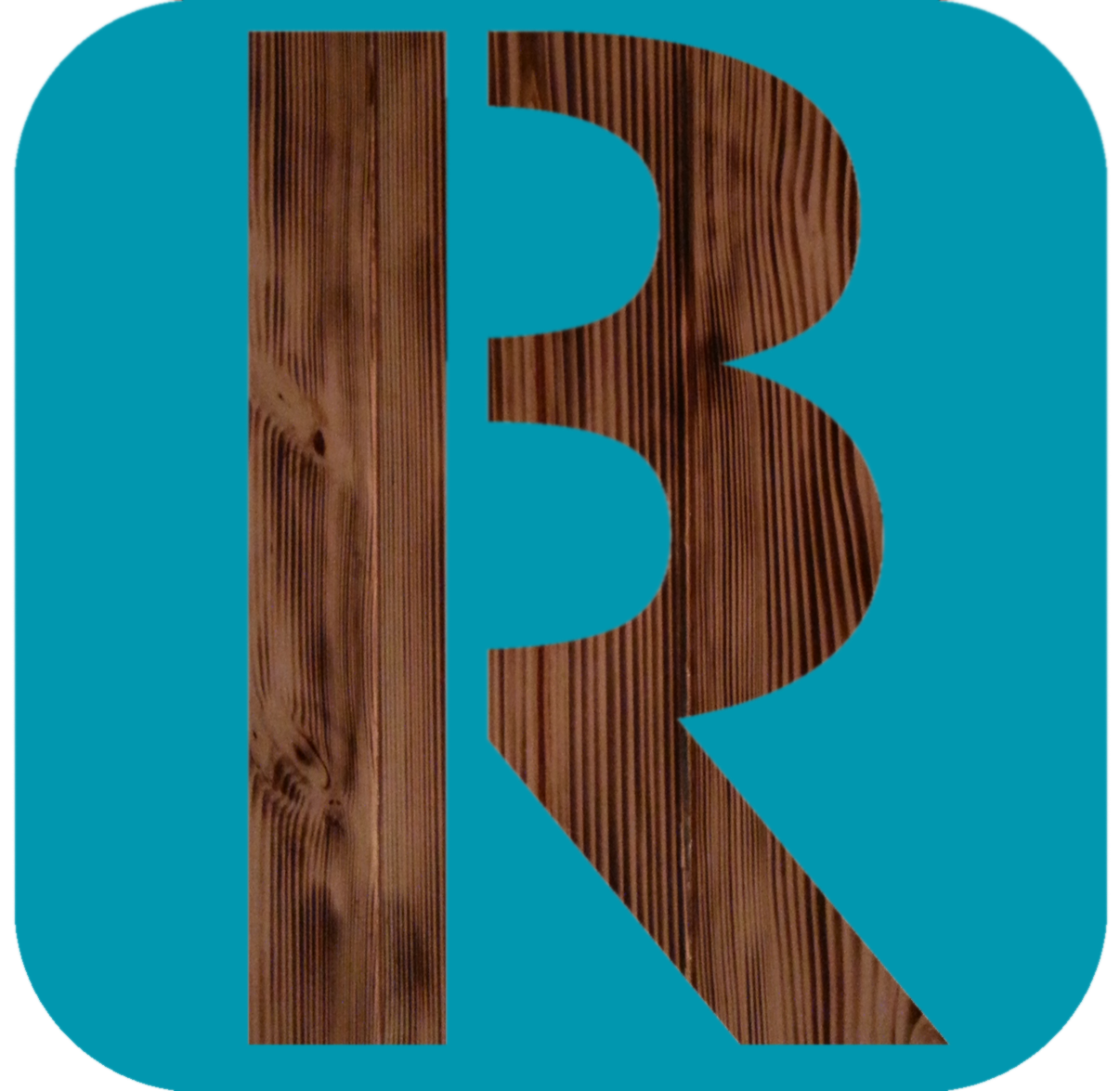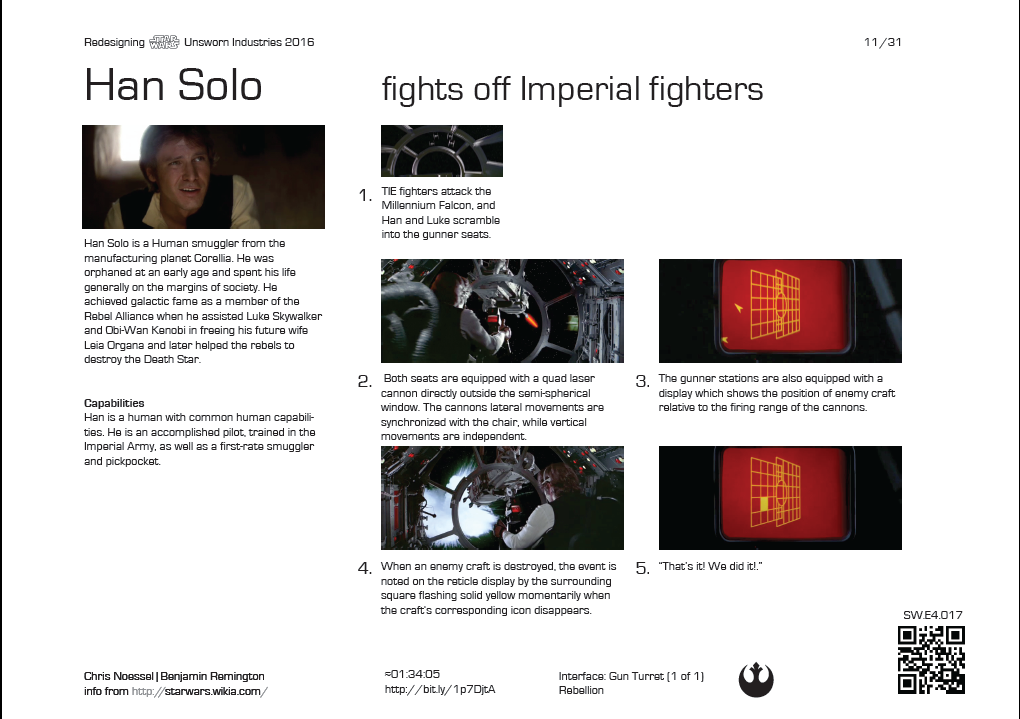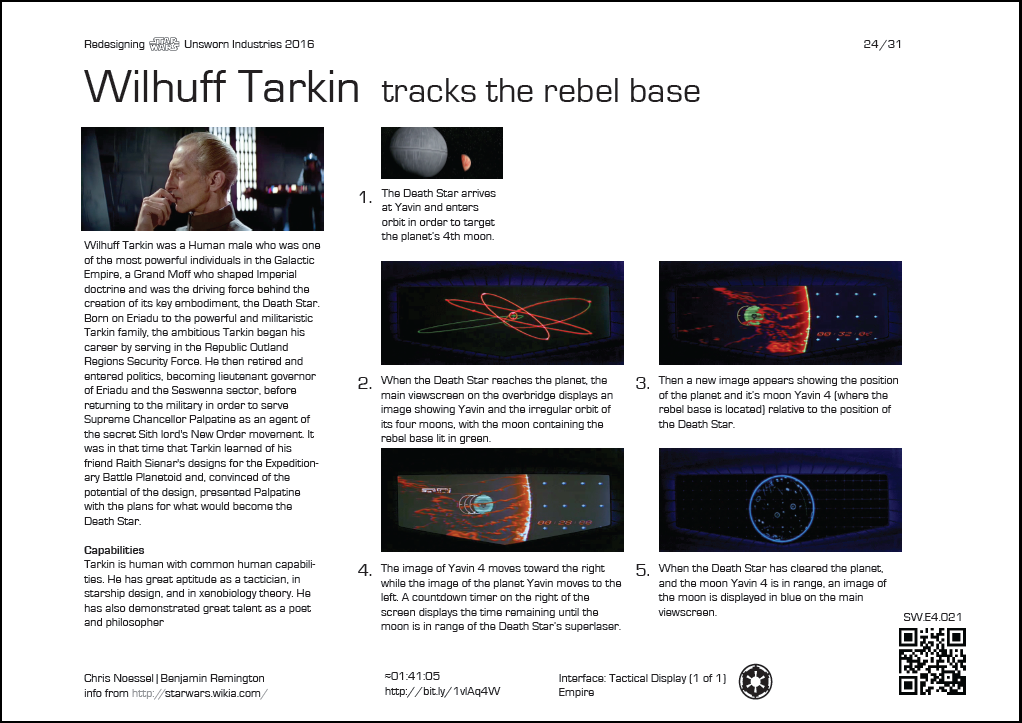Redesigning Star Wars Workshop
The cover page for workbook 1.
Chris Noessel and I began developing the workshop a few years ago as a natural extension of our shared interests in science fiction and design. Chris literally wrote the book (and blog) on the subject of the interplay between sci-fi and real world design and has spoken about it everywhere from MacWorld to SXSW. I'm a geek for in-depth research, and love gleaning design insights from odd places. Needless to say, I was very excited to work with him on the project.
The Big Idea
William Shatner thinks about the future of mobile technology.
As elucidated in Chris' book, and our countless conversations on the subject, science fiction is where most people derive their vision of the future of technology. Sometimes things get way off course, but often the resulting prognostications are dead-on. Witness Motorola's StarTac phone and its uncanny similarity to a Star Trek communicator. The name alone makes its origins immediately apparent. Equally important to the inspiration however is the interaction. By the time of StarTac's release millions of users had already been trained by television to immediately recognize how the device worked.
Robert Downey Jr. uses direct manipulation on a volumetric projection.
Of course Star Trek isn't the only place to look for inspiration. This is a pattern that happens time and again, and it's one that can be incredibly useful for designers. To some degree, science fiction is an example of design without constraints, of ideal solutions to current problems unencumbered by scarce development resources and limited tech. It's a great place to aim, and most importantly, it's a lot of fun to watch. Everyone knows Star Wars, so it's a natural film to derive lessons from.
The Workshop
1 day, a roomful of awesome nerds, and about a million post-its.
Choosing an interface
To redesign Star Wars you need to understand it. That's why I spent hours poring over Wookiepedia to really get the background on the tech appearing onscreen. At the beginning of the workshop, each participant receives a packet outlining in detail every interface appearing in the film Star Wars IV: A New Hope. These are where opportunities for redesign are listed. To help contextualize them, each interface page lists an associated persona and scenario.
Understanding the Interface
After choosing an interface and forming design teams, participants are asked to examine the interface they'll be redesigning. This starts with creating an annotated diagram of the interface as it exists. Participants are then asked to describe an ideal scenario in which this interface would be used.
Choosing level of constraint
Constraints are often a valuable creative tool, and redesigning fictional interfaces is no exception. Participants are given the option of designing with current technologies, or they have the option of sticking with the script and using only the canonical tech which is diegetic to the Star Wars universe or extant before 1977.
The Redesign
Finally, participants are ready to start sketching their ideas. After an afternoon of collaboration and iteration, designs are finalized and uploaded or presented for voting on participant favorites.
An important takeaway from the workshop are the lessons participants derive from the redesign they undertook. These lessons are something which they can take back to work with them and share.
First Sweden, then the world.
Our first workshop was held in Stockholm in cooperation with Swedish design firm InUse. It has since been presented at UX London and this March in Malmö, Sweden in cooperation with local design firm Unsworn Industries. As places for the birth of design ideas go, Northern Europe isn't a bad starting point, but we'll be bringing the workshop to the rest of the world in due time.
Thanks for checking out my Sci-fi nerdery. I also worked on a mobile app redesign for the Veterans Administration and I did some pretty cool research at Berkeley.








